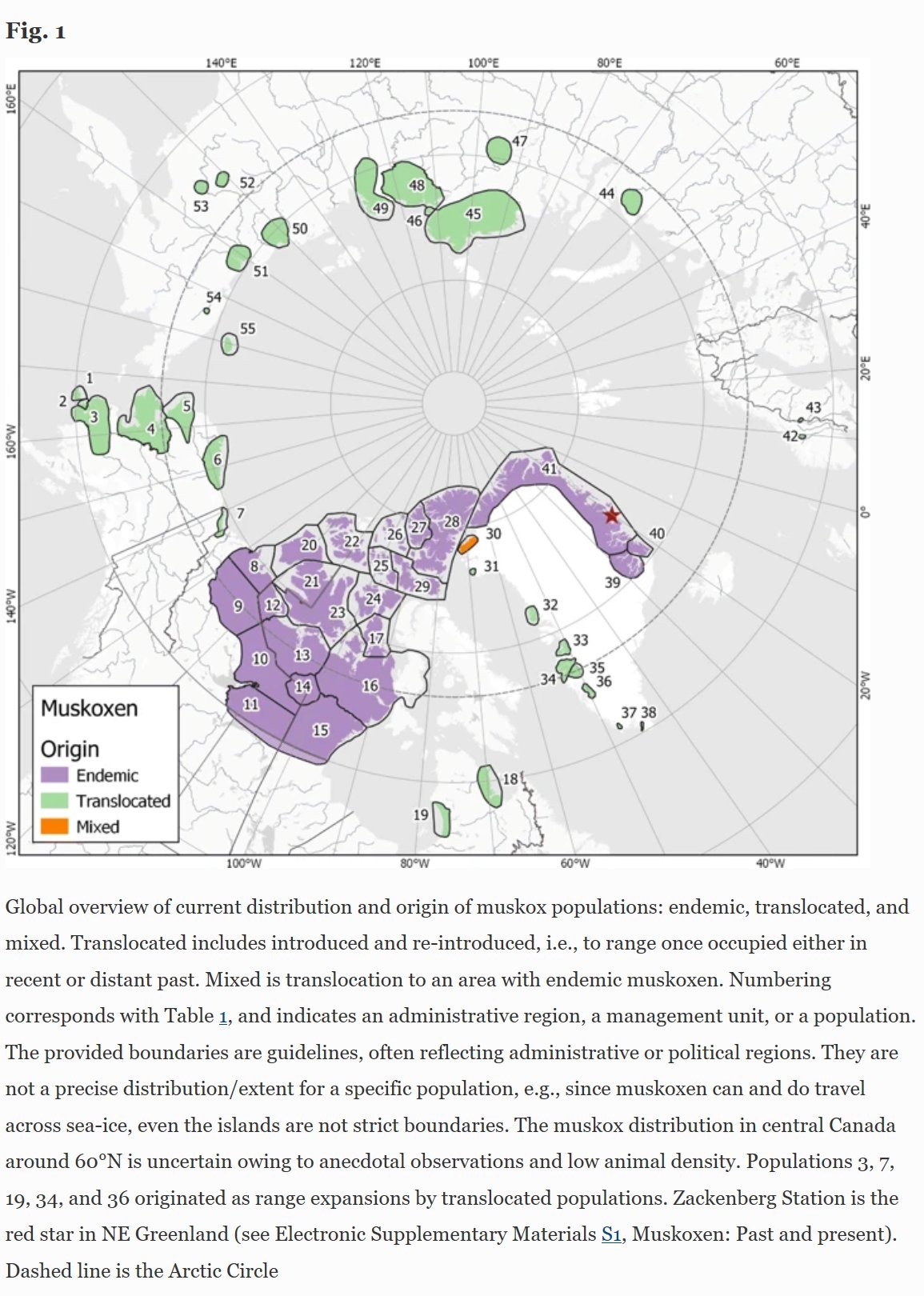Muskox status, recent variation, and uncertain future
New publication by Christine Cuyler, Janice Rowell, Jan Adamczewski et al.

Abstract:
Muskoxen (Ovibos moschatus) are an integral component of Arctic biodiversity. Given low genetic diversity, their ability to respond to future and rapid Arctic change is unknown, although paleontological history demonstrates adaptability within limits. We discuss status and limitations of current monitoring, and summarize circumpolar status and recent variations, delineating all 55 endemic or translocated populations. Acknowledging uncertainties, global abundance is ca 170 000 muskoxen. Not all populations are thriving. Six populations are in decline, and as recently as the turn of the century, one of these was the largest population in the world, equaling ca 41% of today’s total abundance. Climate, diseases, and anthropogenic changes are likely the principal drivers of muskox population change and result in multiple stressors that vary temporally and spatially. Impacts to muskoxen are precipitated by habitat loss/degradation, altered vegetation and species associations, pollution, and harvest. Which elements are relevant for a specific population will vary, as will their cumulative interactions. Our summaries highlight the importance of harmonizing existing data, intensifying long-term monitoring efforts including demographics and health assessments, standardizing and implementing monitoring protocols, and increasing stakeholder engagement/contributions.
